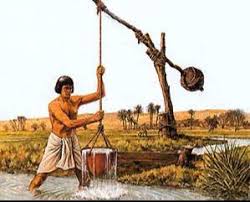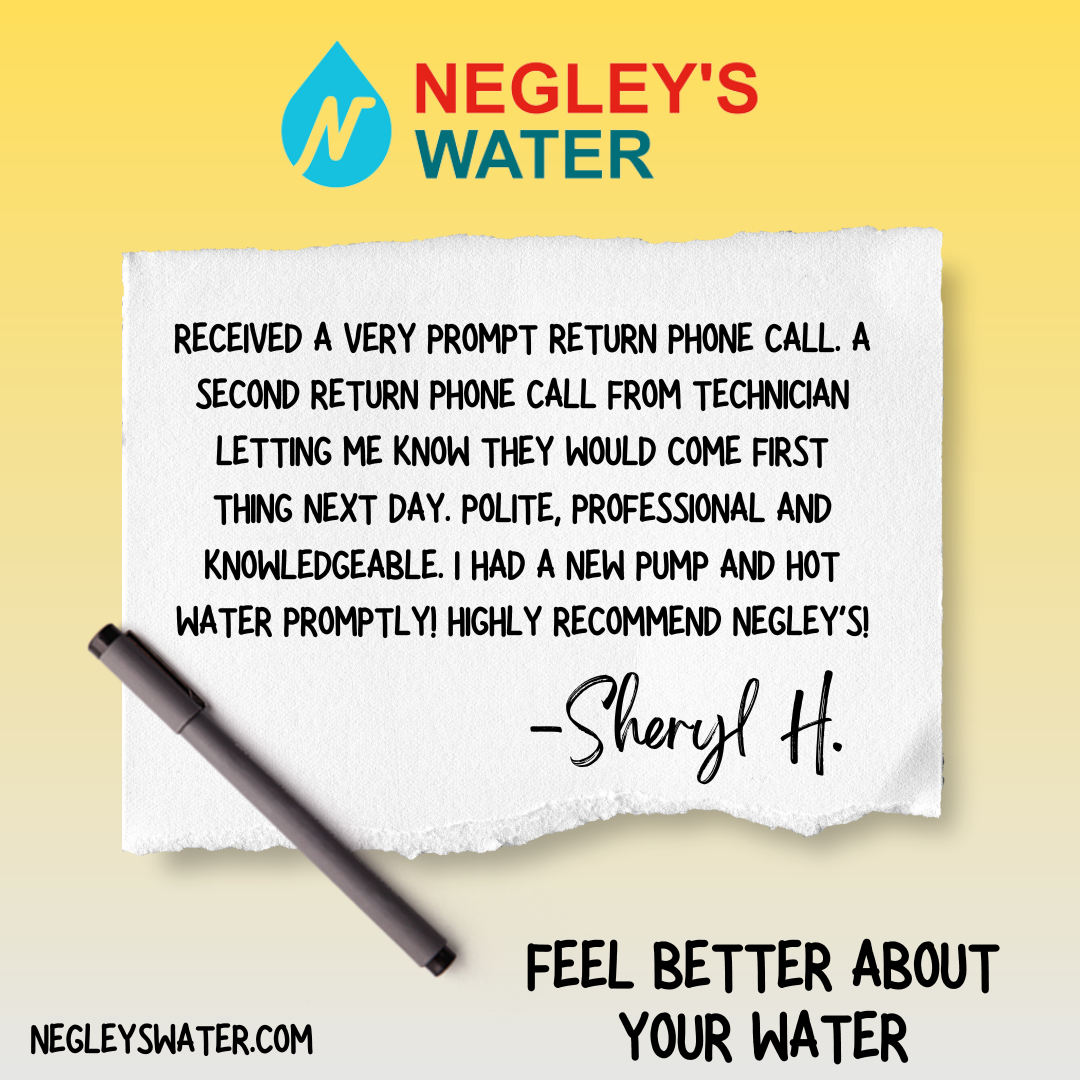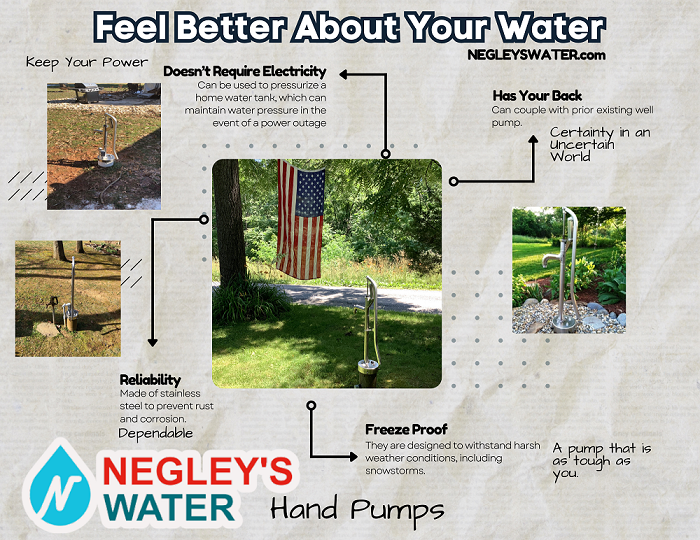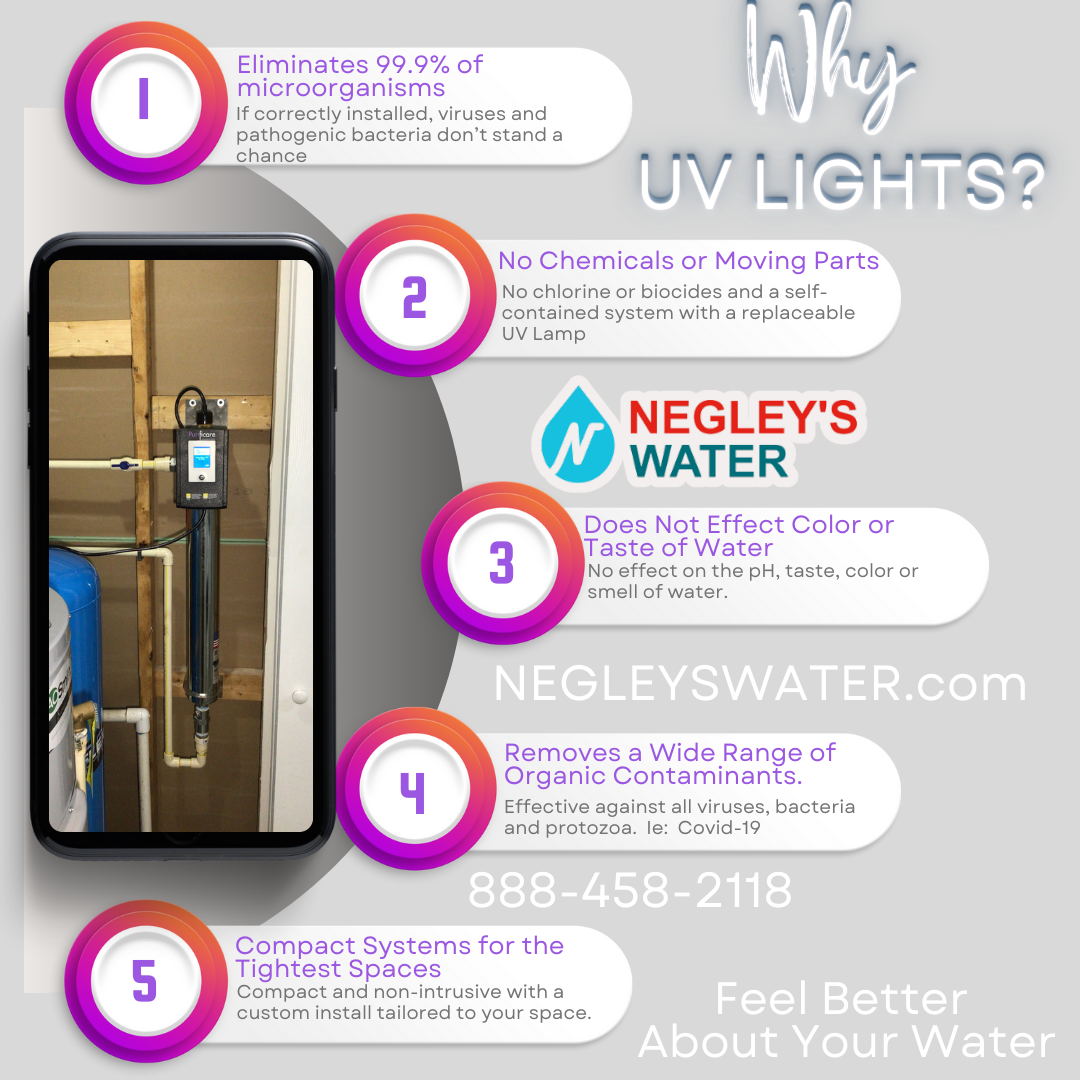Well Pumps: Complete Guide

“Pumping” Up Your Knowledge of Water Pumps
For the portion of the population that live in an urban area, a water well is a difficult topic to understand. It might even seem like a well pump is magic. Over the course of this article we hope to give our readers a better understanding of the history behind a water pump, how it works, the types of water pumps and common answers to questions asked about residential well pumps. A well pump is exactly what it sounds like: a pump that pushes or suctions water up a pipe using electricity, pressure and centrifugal force.

Ground Water:
To fully understand water pumps, there needs to be a better definition of why they’re used in the first place. Groundwater accounts for 95 percent of all freshwater on earth. Water collects between layers of rock and soil in collections known as aquifers. Water freely moves back and forth between aquifers in pores that have permeable paths. When a well is drilled (most modern wells are drilled/bored, but at one time they were driven or even dug.) the goal is reaching an aquifer so that water can be pumped out. Over the course of history there have been several variations of how pumps are used to help groundwater reach the surface.
The History:
The technology behind a water pump has been around since ancient times, but has evolved to become more efficient with energy and time. Egyptians are credited with the first form of a water pump in 2,500 B.C. The term pump is used fairly loosely, because it was essentially just a bucket and a rope. This form was called a “shadoof”. Fast forward to 250 B.C. when early civilizations in Greece and Rome invented an Archimedean Screw. Archimedes of Syracuse invented this method of water movement, because of his involvement with building the biggest ship of that time. The king of that era required the ship to be built hastily and because of this, it had leaks.
To remove the water from the ship Archimedes had to solve the problem by creating the Archimedean Screw. The Screw is a pump form of positive-displacement that uses fluid trapped in a location that is forced through a hollow cylinder with spirals on the outside. The force of turning the cylinder causes water to move up through the spiral portion and out of the trapped location. With Archimedes’ invention, water was taken out of the ship and put into irrigation ditches. The method is still in use today to remove wastewater in treatment plants and even in some amusement park water rides..

During mathematics Archimedes worked with his screw and another inventor by the name of Ctesibus who was a Greek inventor living in Egypt. He is credited with creating a two cylinder pump that used the first form of a piston. The two cylinders created a steady, conscious water flow that was handheld. The evolution of well pumps saw many improvements over the course of the next 1,500 years. It was held at a stand still after the fall of the Roman Empire during the Dark Ages. Then a surge of innovation and creativity was sparked in the 18th Century during the Enlightenment Period. These contributions consisted of an early drawing of the centrifugal pump, work with gears, fluid mechanics, pistons and steam engines.
Post Civil War and the Industrial Revolution saw an increase of skyscrapers in Urban settings. The love of tea created a drastic want to get water into the urban settings. The need to get water to each story sparked creativity to use water pumps beyond hand cranks and steam powered devices or energy?. Water was able to be pumped using hydraulics, coal and then electricity. The late 1800s and early 1900s soon established the foundation of what we now know of well pumps today.

How Does a Pump Work:
After reaching an aquifer a pump must be installed within the well itself. The electric pump will either use suction (jet pump) or it will pressurize the water to force it upward (submersible pump). Both methods rely on centrifugal force, which is the phenomenon that causes objects to move away from the center they are revolving around. Spinning rotors within the pump, called impellers, force a vacuum that pushes the water up through the well casing into the distribution system of the well.
The Different Types of Well Pumps:

Jet Pumps
Jet pumps are used when the depth of the well is below 125 feet. There are two types of jet pumps with one being shallow (up to 25 feet) and then deep (up to 125 feet.) The difference between the mechanical make-up of the two is where the jet ejector can be found.. It’s located on a shallow jet pump on either the housing of the pump or the face of it. With a deep well jet pump it is housed within the well.
Submersible Pumps
Submersible pumps are water pumps that act as mechanical equipment that instead of pulling, pushes the water toward the intended location. A submersible pump uses kinetic energy by changing the speed including the blades (impeller) of the water pump converting the energy into pressure energy forcing that water up the line. This type of water pump is also referred to as a well pump and it is fully submerged in the water of the well.

Advantages and Disadvantages of a Jet Pump
A jet water pump is generally more cost effective than its submersible counterpart and are much easier to service because they aren’t underground. They also leave a smaller carbon footprint because they use less horsepower. There are some drawbacks to the use of a jet pump, the first being they aren’t as efficient as submersible pumps. They have limited suction depth and will require more maintenance over time. Jet pumps are very susceptible to power outages as well.
Advantages and Disadvantages of a Submersible Pump
A submersible water pump is more efficient than a jet pump and is able to pump water from deeper wells. Submersible pumps also typically have a longer lifespan and require less maintenance than a surface jet pump. Submersible pumps also operate at a quieter noise level than a jet pump. A submersible well pump can also handle higher volumes of water, giving it a better capacity than a jet pump.
One drawback to a submersible pump is the initial cost ( even with a return on investment) and challenges of maintenance and routine inspections with the pump not being at ground surface. Another potential problem is that the pump has to be fully submerged or there is a risk for overheating. With the pump fully in water there is also a risk for corrosion from minerals within the water and the pH of the water.

Hand Pumps
One of the oldest forms of water pumps is the hand pump. A hand water pump operates by creating a vacuum in the borehole of the well by a piston or plunger that moves north and south by way of the corresponding handle. That motion inside the cylinder of the pump creates suction or a vacuum that moves the water to spout level and out toward the outlet.
Advantages and Disadvantages of a Hand Pump
The advantages of this ancient water pump technology has kept it relevant for centuries. At NEGLEY’S WATER, we rely on the Bison Hand Pump series for our hand water pumps. Some of the benefits of this hand pump include the peace of mind of having a sustainable water supply in the event of having no electricity. The hand pump can couple with a prior existing well pump. As mentioned it doesn’t require electricity, so it can pressurize a water tank. This gives a homeowner the ability to maintain water pressure in the event of a power outage.
Another advantage to a hand pump is the reliability of the Bison Hand Pump. They are stainless steel and that factors out corrosion. The hand pump is also freeze proof and is able to withstand harsh weather conditions including snowstorms. Some of the drawbacks to a hand pump addition include the maintenance that is required to keep it operating efficiently. Of course there is a large amount of physical “sweat equity” that is required to produce a very low flow rate compared to its counterparts of a jet or submersible pump.

Constant Pressure
Another aspect of well pumps is with an addition for a constant pressure/variable frequency drive to an incoming water source. Within the constant pressure system when water demand increases, so does the well pump speed. When water demand decreases, so does the well pump speed. For example, without constant pressure when a homeowner is taking a shower, water pressure might drop if another home occupant starts the dishwasher or flushes the toilet. With a constant pressure well system an electronic sensor triggers the pump to accelerate the water pump motor to accommodate the increase in water demand.
What a homeowner gets is a regular water pressure maintenance that remains steady and the stress on the pump is reduced. Without the fluctuations in energy, a constant pressure water system is more energy efficient. With the reduction in energy consumption, not only is it beneficial for the environment, but it’s wallet friendly as well. Cosmetically, a homeowner will require a small pressure tank because there is less need for water storage.

Maintenance on a Well Pump
Do they need regular maintenance? Yes, it is a machine and well pumps can’t be expected to run as efficiently as they are supposed to without proper care. Regular maintenance will help the pump last longer, run cost effectively and keep a healthier water supply. Yearly bacteria tests in the absence of an Ultra Violet (UV) light is necessary in order to keep your water supply as healthy as possible for your home. Bacteria tests can help to indicate surface water getting into your water supply. NEGLEY’S WATER recommends a UV Light and regular once a year UV service to ensure the healthiest water for your home.
Regularly checking the appearance of your well cover and your pressure tank will also solve any well pump issues. Staying aware of your electric bill and noticing any fluctuations in power use will indicate an inefficient well pump. Water quality and water pressure changes will also highlight a declining water pump. Different than normal noises associated with your well pump will also indicate a pump that is not operating as it should.
If you’re purchasing a “new to you” home it is a great idea to have a Basic Well Inspection performed by a local water expert. An evaluation of the pressure tank, the pressure switch and the bladder within the pressure tank will be part of that process. The national average lifespan of a well pump is 8-15 years. Of course, a well pump may last beyond that and you’ll hear of people that have had pumps for well over a generation.

In Closing
The goal of any well pump expert is to create the healthiest, most productive and efficient water supply source for their customers. A home’s water supply is like your bank account, if you’re wondering what’s in it or how it’s performing .. It’s time to look at it. Please feel free to visit us NEGLEYSWATER.com and sign up for a free quote to start the conversation about your home’s well pump. As always NEGLEY’S hopes that you can Feel Better About Your Water.